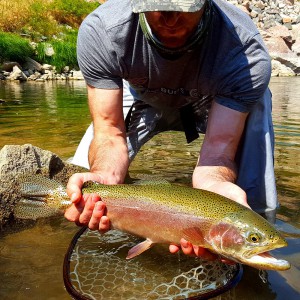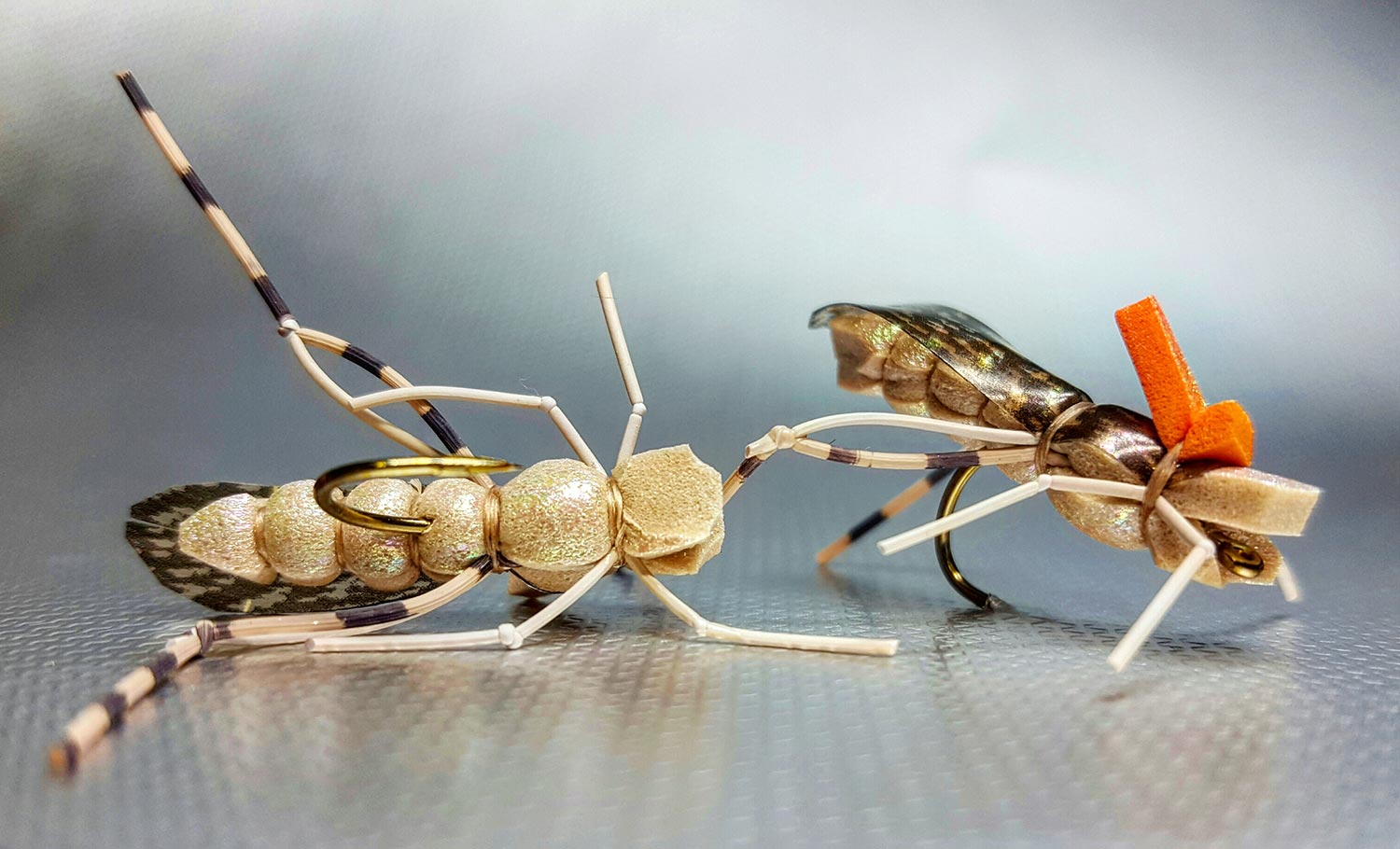By Bob Reece
I look forward all year to the warm summer and fall days that allow me to fish hopper dropper rigs.
I fill one fly box each winter to meet this need. One half is filled with my Fusion and Clearwater Crawler nymphs. The opposite side is filled to the brim with Beefcake Hoppers.
When designing this pattern, I spent time viewing natural hoppers from below the surface of the water. The differentiation of body segments and leg movements act as prominent distinctions. These factors guided my design of the underside of the fly. The Thin Skin wing provides an accurate imitation while drastically increasing the durability of the top side of the fly. With the application of UV resin, the durability of the fly’s underside is also increased.
 The foundation of this pattern is the Tiemco 2499BL. Having been created for the world of nymphing, this outstanding hook is ideal for extended body terrestrials. Short in the shank and wide in the gap, the hook keels this buoyant pattern very effectively. The large gap maintains the needed room to hook fish, even with the application of foam on the bottom of the shank. Yet, most importantly its short shank pins and holds it’s place in the jaws of even the largest fish.
The foundation of this pattern is the Tiemco 2499BL. Having been created for the world of nymphing, this outstanding hook is ideal for extended body terrestrials. Short in the shank and wide in the gap, the hook keels this buoyant pattern very effectively. The large gap maintains the needed room to hook fish, even with the application of foam on the bottom of the shank. Yet, most importantly its short shank pins and holds it’s place in the jaws of even the largest fish.
Specific match the hatch tactics are often applied to dries that imitate mayflies, caddis and other more dainty insects. This thought process if often abandoned with hoppers and that is a mistake. There will always be some fish, that will take any hopper pattern. However, there will be others that will only take an accurate imitation. When those moments come, be prepared with some Beefcake in your box.
Watch this video and learn to tie the Beefcake Hopper.
Louis Cahill Gink & Gasoline www.ginkandgasoline.com hookups@ginkandgasoline.com Sign Up For Our Weekly Newsletter!


Great pattern Bob! Just wondering if the indicator foam is necessary? Seems to detract a bit?
Rick,
This pattern sits low in the surface film like the natural. When I fish it on rough mountain streams I use the orange indicator. On calm smooth waters I change the indicator color to tan and on still waters i leave it off completely. In moving water you’ll lose sight of it at longer distances without the indicator. I use the foam because I can fish it all day without having to worry about floatant.
It is an awesome pattern – I love the combination of simplicity and realistic impression. For my money you can’t beat a 3 material fly. And your point on foam floating virtually all day without floatant may bother some purists but what they don’t realize is that it is really about proper presentation as much as convenience. I really enjoy dabbling in fly design – especially to solve specific problems.
You really killed this one. Pretty easy to convert it into a cricket pattern too.
Thank you for the kind words Rick. I really appreciate that. If you tie any of these up I’d love to hear how they fish for you.
I’ve been looking for a better foam hopper pattern to tie for the next month of fishing and this one checks all the boxes for me! Looks like a great pattern and I appreciate the fact you took the time to study the naturals from the fishes viewpoint. I’m excited to hit the vise and tie some up!